Jogyesa Temple – 조계사 (Jongno, Seoul)
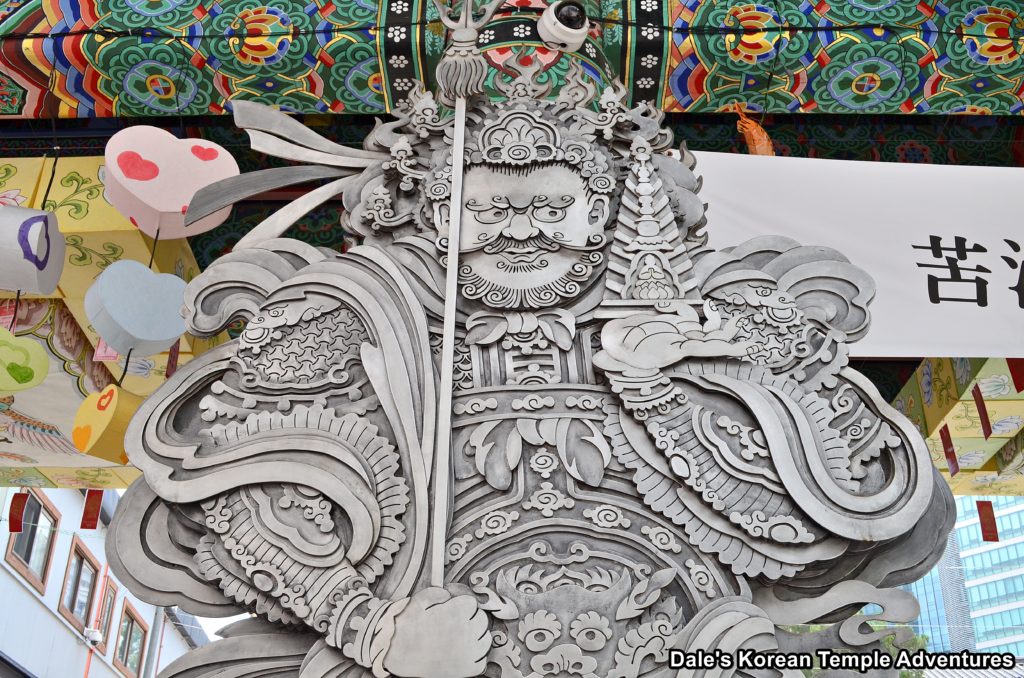
Temple History
Jogyesa Temple is located in Jongno, Seoul. The name of Jogyesa Temple might sound familiar. It’s the headquarters to the largest Buddhist Order in Korea: the Jogye-jong Order. Jogyesa Temple has a bit of a unique history. The original building that took up residence at Jogyesa Temple was actually transferred from a temple called Gakhwangsa Temple in neighbouring Susong Park in 1938. Gakhwangsa Temple was first founded in 1395. This original structure no longer remains; but during Japanese Colonial Rule from 1910-1945, the temple would grow in importance in its resistance towards the Japanese efforts to suppress Korean Buddhism. It was in 1937 that the resistance movement was started and funding towards Korea’s first Buddhist mission began. At this time, the temple was renamed Taegosa Temple. Only after the Buddhist Purification Movement in 1954 did the temple change its name to its current name: Jogyesa Temple.
Temple Layout
You first enter the temple grounds, which are surrounded on all sides by stores selling various Buddhist items, through the Iljumun Gate, or “One Pillar Gate,” in English. The four pillars that make up this gate are fronted by the Four Heavenly Kings. These celestial statues are uniquely presented as metal statues.
As you step further into the temple grounds, the next thing you’ll notice is a ten story stone pagoda. This massive pagoda houses ten sari (crystallized remains) of the Buddha. They were gifted to the temple by the royal court of Thailand when Jogyesa Temple was still known as Taegosa Temple. Next to the main hall, and to the right, is a 500 year old Lacebark Pine, or White Pine, that’s Natural Monument #9. Known as “Baeksong,” in Korean, the tree was brought to Korea by Chinese missionaries during the Joseon Dynasty (1392-1910).
The massive main hall, the Daeung-jeon Hall, on the other hand, occupies the majority of the compact temple grounds. The exterior walls to this hall are adorned with some masterful Palsang-do (Eight Scenes from the Buddha’s Life) murals, as well as a stunning collection of floral latticework. Inside the Daeung-jeon Hall, and resting on the main altar, are a triad of giant statues. In the centre sits Seokgamoni-bul (The Historical Buddha). This statue is joined on either side by Yaksayeorae-bul (The Medicine Buddha, and the Buddha of the Eastern Paradise) and Amita-bul (The Buddha of the Western Paradise). This configuration connotes the cycle of life from birth to death. It should be noted, too, that this temple and main hall are busy all times of the day.
To the left of the main hall is the temple’s elevated bell pavilion, or the “Beomjong-ru,” in Korea, which is joined by the Yeongsan-jeon Hall, or “Vulture Peak Hall,” in English. There are also an assortment of administrative offices and buildings in this area including the temple gift shop.
To the rear of the Daeung-jeon Hall is the Central Buddhist Museum. If you have the time, I highly recommend a visit. The most prominent item at this museum is National Treasure #126, which is the Sarira Reliquaries from the Three-story Stone Pagoda of Bulguksa Temple. This artifact dates back to the 8th century around the founding of Bulguksa Temple in 751 A.D.
Admission to the temple is free.
How To Get There
There are three ways that you can get to Jogyesa Temple. The first is from Jonggak Subway Station, Line #1. Go out exit #2 and go straight for 70 metres. You’ll need to cross the road and go straight for an additional 100 metres, where you’ll finally find Jogyesa Temple. The second way is by getting off at Anguk Subway Station, Line #3. Go out exit #6 and go straight for 50 metres. You’ll then need to cross the street in front of Dongduk Gallery. The temple is an additional 50 metres past the gallery. The third way a visitor can get to Jogyesa Temple is by getting off at Gwanghwamun subway station, Line #5. Take exit #3 and go straight for an additional 150 metres. The temple is between YTN Parking Tower and Hana Bank.
Overall Rating: 8/10
There are quite a few things to see and enjoy at Jogyesa Temple like the ten story pagoda that houses the Buddha’s sari and the 500 year old white pine that’s Natural Monument #9. In addition, you can enjoy the massive statues inside the main hall or wander over to the museum and see National Treasure #126 from Bulguksa Temple in Gyeongju.

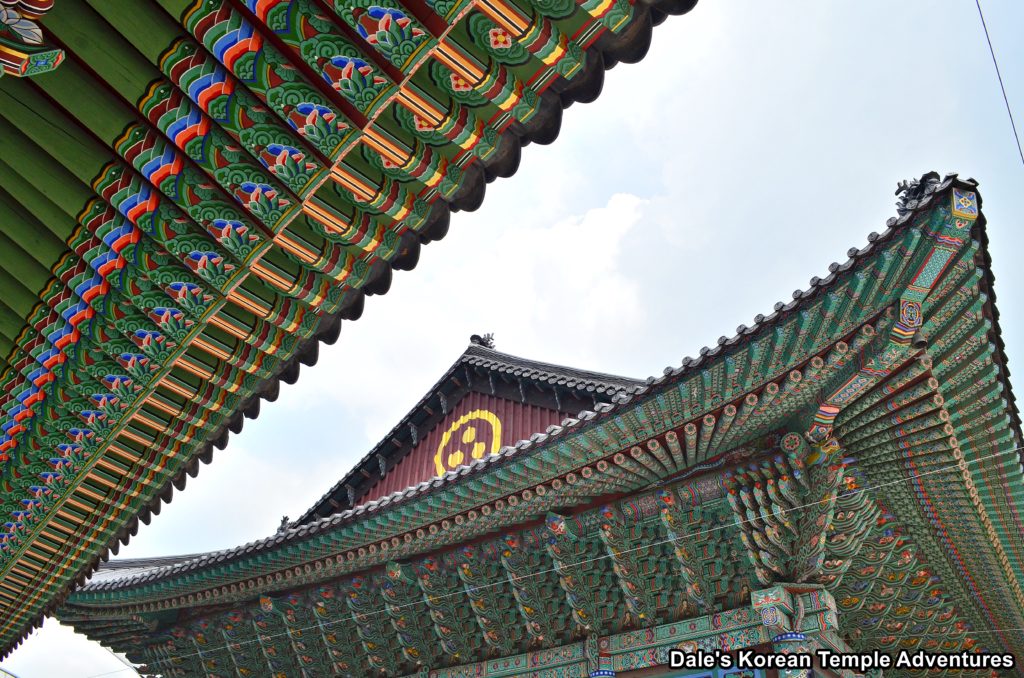
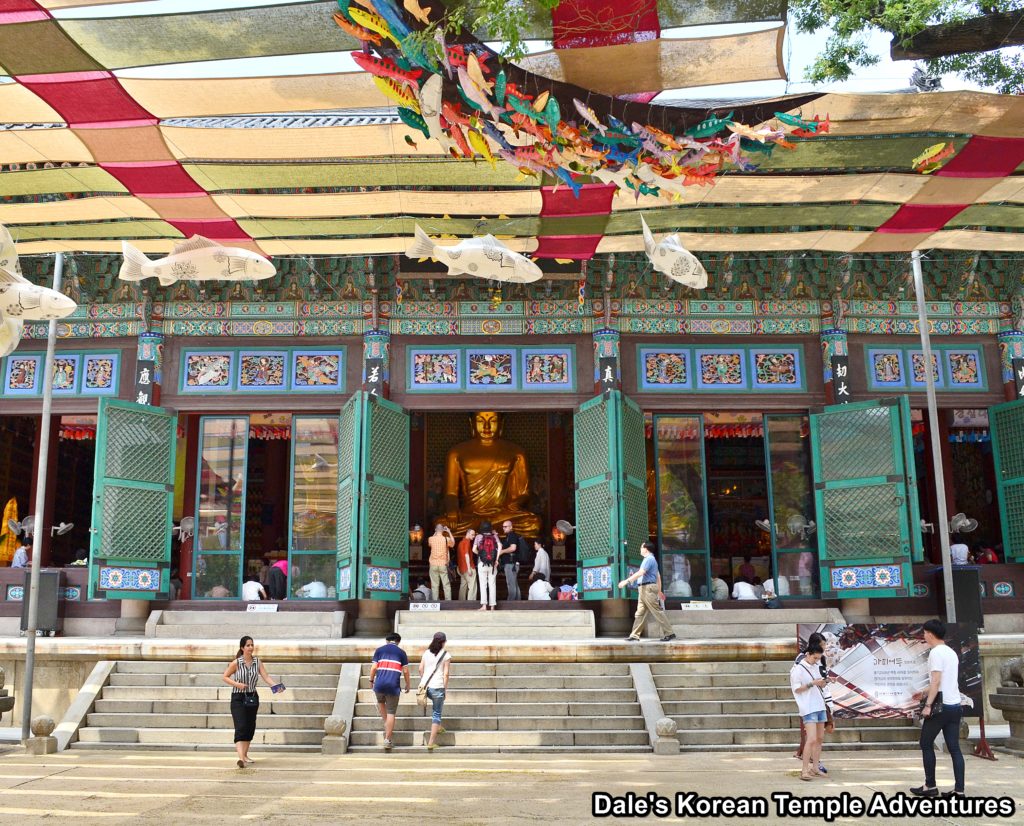
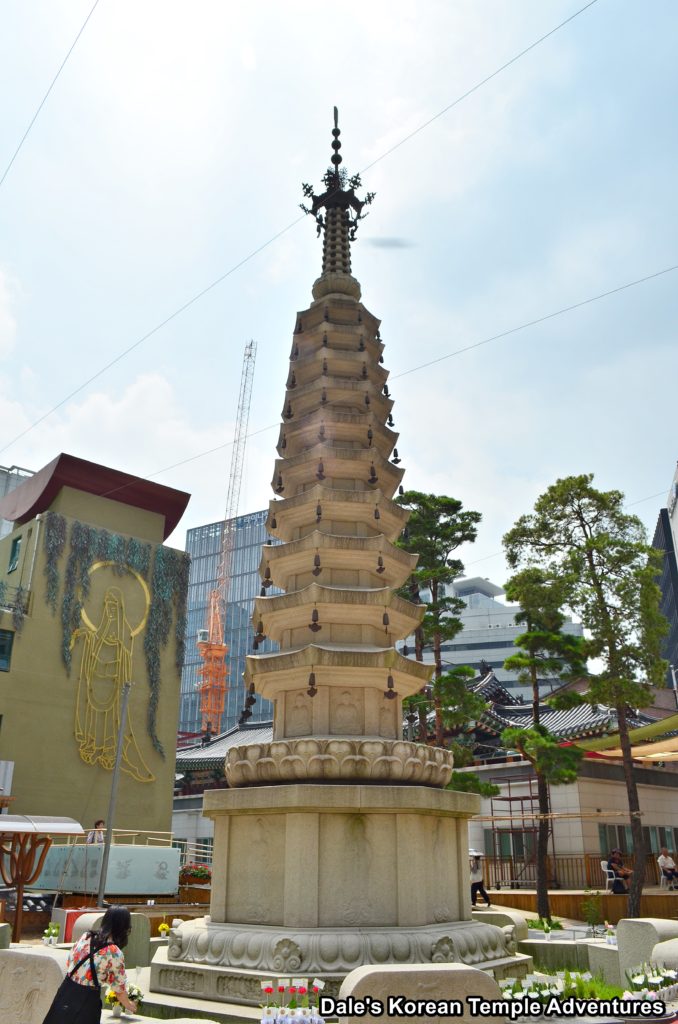
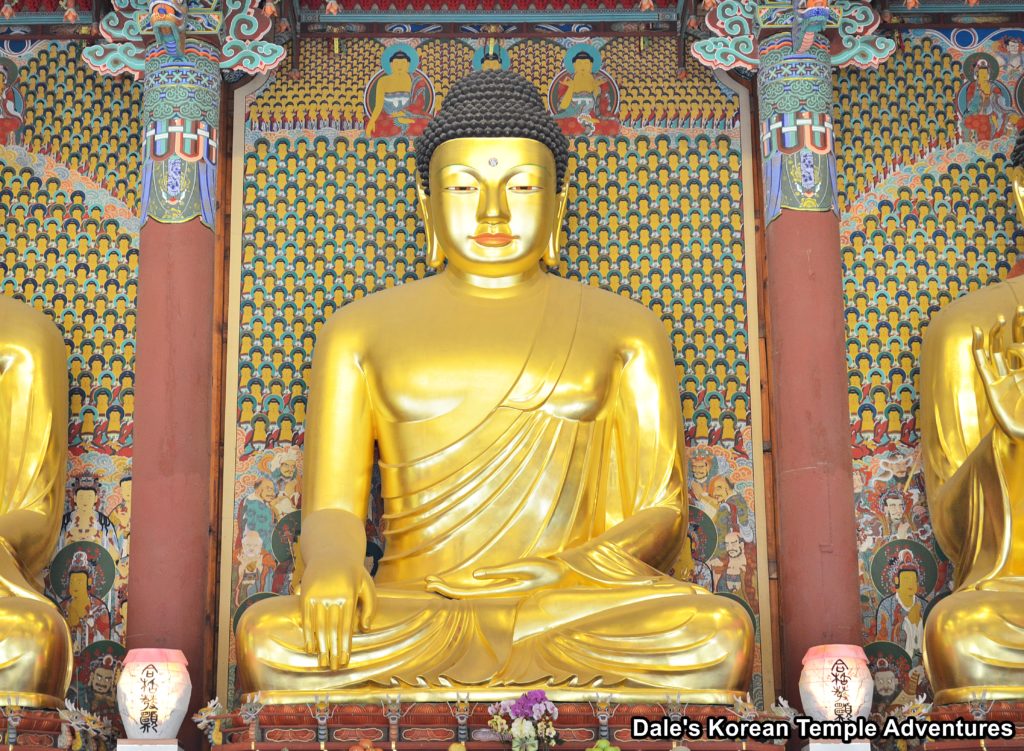
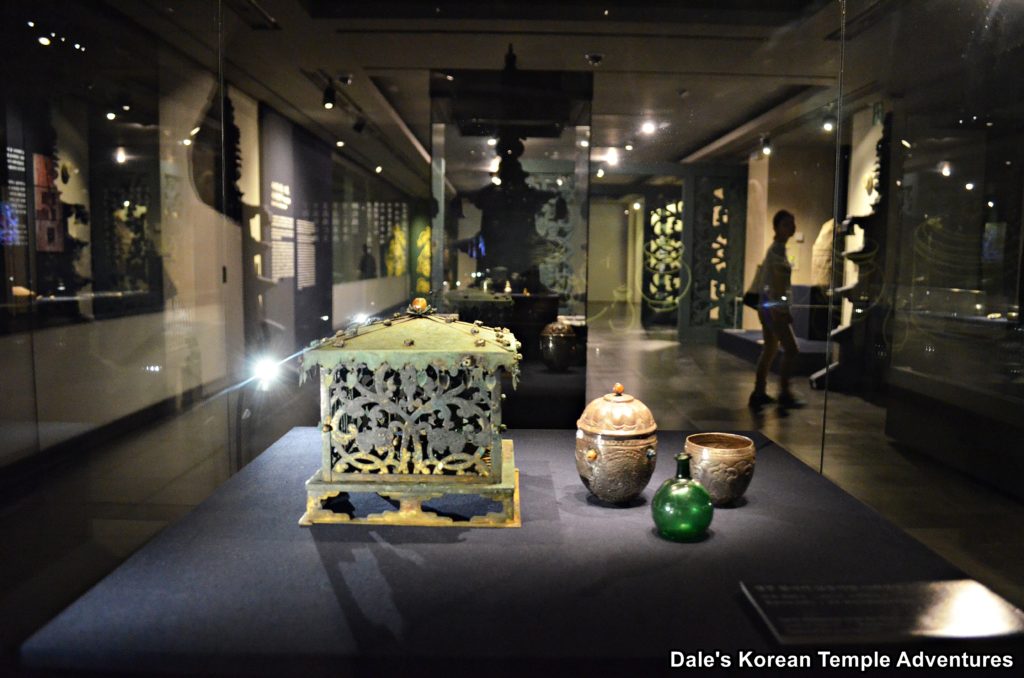
2 Comments
Jon Paul (Duffy's Tavern)
Thought you might be interested in this: https://www.flickr.com/photos/theonemacduff/50585623876/in/album-72157716826660017/
We were just walking down the street when I saw this shot. Somewhere I’ve got another shot of two of the heavenly kings also. Please feel free to use the photo, just give me a credit as Duffy’sTavern. Oh yeah, there’s this set too: https://www.flickr.com/photos/theonemacduff/albums/72157714135845081
admin
Beautiful picture! Thank you for sharing.